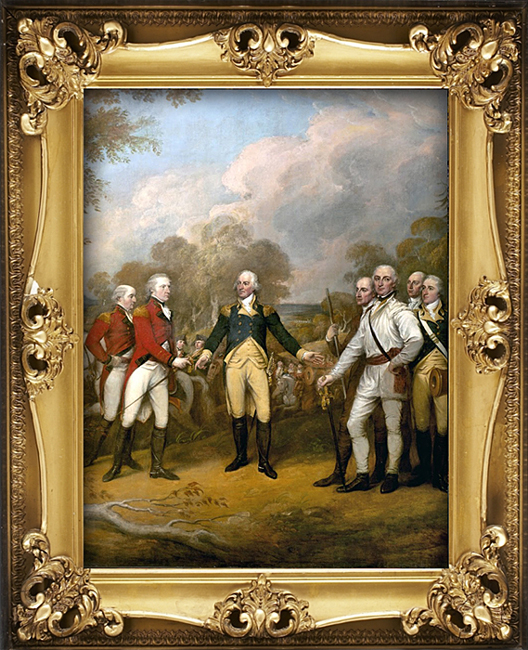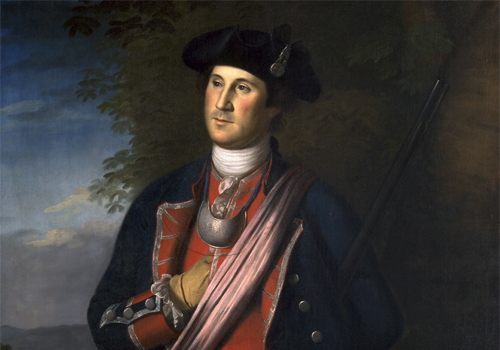About Our Louisiana Society
Introduction
The first Society of Colonial Wars was established in 1892, and became the General Society of Colonial Wars in 1893. The General Society is a tax exempt organization that charters individual State Societies, and it is in one or more of the State Societies that an individual holds membership. The aggregate of State Societies constitutes the General Society.
Purposes
The Preamble of the Articles of Incorporation for the General Society reads:
“WHEREAS, It is desirable that there should be adequate celebrations commemorative of the events of Colonial History which took place within the period beginning with the settlement of Jamestown, VA., May 13, 1607, and preceding the battle of Lexington, April 19, 1775;
THEREFORE, The Society of Colonial Wars is instituted to perpetuate the memory of those events, and of the men who, in military, naval, and civil positions of high trust and responsibility, by their acts or counsel, assisted in the establishment, defense, and preservation of the American Colonies, and who were in truth founders of this Nation.



The Colonial Wars in America 1607-1763
By Mary Rhinelander McCarl
There is nothing glorious about armed conflict in itself. It signifies the breakdown of negotiation and compromise. Yet we have preserved tales of war ever since Homer sang of the siege of Troy. There is a fascination in retelling exemplary, because they are true, accounts of this country’s early days, when people arose to heights of extraordinary personal heroism; proved themselves, like George Washington, to have natural gifts for leadership; or failed like General Braddock, who paid for his mistakes with his life. On a deeper level, an understanding of the history of these conflicts in the days before America became independent is crucial to an understanding of the very core of America as a nation. Our language, our civilization, our boundaries within and without, were all fixed by the outcome of those conflicts that we call collectively The Colonial Wars.
Armed conflict in America existed from time immemorial. Wars among Indian nations predated European conflicts by centuries, and when the British, French, Spanish, and Dutch arrived in America, they brought with them the political, religious, and mercantile tensions of Europe, which would continue to echo the wars of the Old World within the New. In the Society of Colonial Wars,1892-1967: Seventy-fifth Anniversary, Nathaniel C. Hale, chronicled the conflicts of the Europeans with the Indians, the AngloDutch conflicts, the intra-colonial squabbles, as well as the grand campaigns between the British and the French.
The aim of this historical essay is more modest. It tells the stories of selected conflicts that are examples of the changing relationship between the British settlers, the Indians, the professional British army, and the French. It will begin with a glance of the seventeenth-century conflicts between settlers and Indians, particularly the Great Swamp Fight in King Philip’s War. These wars were fought by the colonials alone, without men or funding from the mother country. At that time the main problem for the Americans was to invent a strategy that would beat the Indians at their own game of lightning raids against defenseless settlements and of ambushing columns of men marching in European formations.
The eighteenth-century wars, in which the Americans played a vital but subordinate role, pitted professional European armies against each other. The British suffered occasional defeats in these campaigns when they violated the rules of wilderness warfare, but the final decisive battles were won by European armies in direct confrontation with each other. Here the focus is on the American colonial soldier as part of the great British military establishment. Were the Americans simply inept, argumentative, unreliable, pale shadows of the Redcoat ideal, or did they “march to a different drummer” and act in an honorable and reasonable way according to their own lights?
It is generally conceded that the British colonies of North America were founded for religious or commercial, not military purposes. Captain John Smith of Virginia and Captain Myles Standish of Plymouth Colony, professional soldiers, were exceptions among the farmers and traders. Yet the colonies were founded in areas with indigenous populations that quite naturally objected to being forced off their lands. How should they protect the farms with their houses full of food and manufactured goods, and their outbuildings and pastures full of cattle and horses? What was the most efficient method of defense on a moving frontier? In the earliest years of Virginia, the settlers huddled in fortified centers, and every settler was put under Draconian military discipline, but this promptly broke down and the militia system was substituted.
Every able-bodied male between the ages of sixteen and sixty served in the militia without pay. Training was minimal, but every soldier had to bring his own firearm to the annual training day, and to demonstrate that he was an accurate shot. The militia in its regular form was a purely defensive force, never asked to move outside the neighborhood of the members’ homes. In areas of particular danger the colonists developed a garrison system of fortified dwellings where inhabitants of a village might huddle until the threat of an Indian raid was past, but normally members of the militia guarded their own homes. The main use of the militia on the frontier was as a pool of men from which paid “rangers” were chosen to patrol the frontier line just in front of the settlements, and to go on occasional offensive raids against Indian villages. In the seventeenth century rangers were neither permanent nor professional soldiers.


